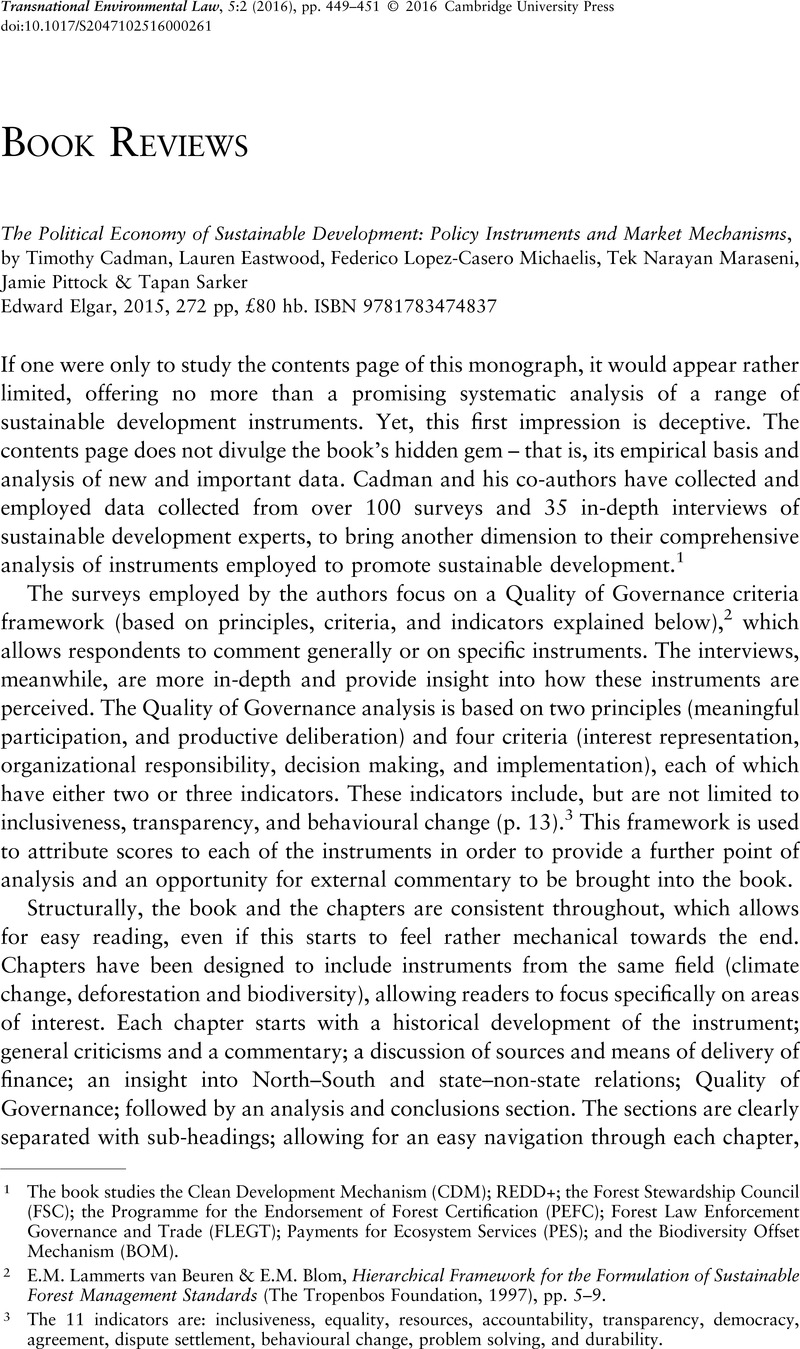No CrossRef data available.
Published online by Cambridge University Press: 24 October 2016

1 The book studies the Clean Development Mechanism (CDM); REDD+; the Forest Stewardship Council (FSC); the Programme for the Endorsement of Forest Certification (PEFC); Forest Law Enforcement Governance and Trade (FLEGT); Payments for Ecosystem Services (PES); and the Biodiversity Offset Mechanism (BOM).
2 Lammerts van Beuren, E.M. & Blom, E.M., Hierarchical Framework for the Formulation of Sustainable Forest Management Standards (The Tropenbos Foundation, 1997), pp. 5–9 Google Scholar.
3 The 11 indicators are: inclusiveness, equality, resources, accountability, transparency, democracy, agreement, dispute settlement, behavioural change, problem solving, and durability.
4 Further basic information on the scheme can be found online at the UN-REDD Programme, available at: http://www.un-redd.org/aboutredd.
5 These sections are entitled ‘North/South Relations and State and Non-State Actors’ (p. 47), ‘Quality of Governance’ (p. 52), and ‘Analysis and Conclusions’ (p. 58).
6 The 6 recommendations can be summarized as follows: (1) governments need to engage more with business; (2) government environment agencies should support but not lead; (3) government economic agencies should be supported to lead; (4) new financial mechanisms to fund sustainable development should continue to be developed, drawing on earlier lessons; (5) a need to identify and support leadership from countries/sectors; and (6) a need to ensure national- and international-level interaction between governments.